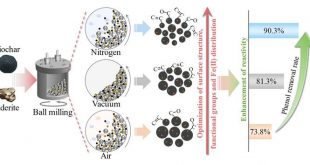As World Water Week kicks off, the Copernicus Climate Change Service reveals how its open data helps governments, industries and individuals manage our precious resource in numerous ways
The Copernicus Climate Change Service (C3S), implemented by the European Centre for Medium-Range Weather Forecasts on behalf of the European Union, is marking World Water Week with a wealth of information on how it helps all sections of society to look after our most vital resource. C3S combines climate observations with the very latest scientific research to develop much-needed free-access data about the state of the climate in Europe and the rest of the world – including how it affects our water.
World Water Week, the annual focal point for one of the globe’s most pressing climate-related issues, takes place in Stockholm from 25-30 August this year with the theme ‘Water for Society – including all’.
C3S has been working with the Swedish Hydrological and Meteorological Institute (SMHI), to develop an operational service for the water sector. SMHI is developing the service over several years using C3S data and will enable decision-makers to adapt to looming climate challenges from the supply of water to predictions of fluctuations in variables such as river flow and soil moisture.
“The service works on two levels: on the one hand we provide future projections of water resources under different greenhouse gas emission scenarios, on the other we generate predictions of fluctuations in variables such as river flow and soil moisture for the coming months,” comments Peter Berg, Leader of the Hydrological Research unit at SMHI. “This is a great help to those who allocate resources and design infrastructure in the water sector.”
SMHI is developing the service over several years using C3S data which will include an online interface providing maps and graphs. Practical examples of how decisions are made in the water sector will also be given. Decision makers in the water industry will play a vital role in adapting to the challenges of climate change.
“In areas that become wetter, there may be an increased risk of river flooding and damage to property. But even with the long-term water projections, there will be considerable variation in precipitation, soil moisture and river flow from year to year. In fact, there may be a higher likelihood of extreme weather events, such as flash flooding and drought,” explains C3S Sectoral Information System (SIS) Manager Carlo Buontempo.
The C3S operational service for the water sector aims to provide much-needed projections for water-related indicators which can help predict the impact of climate change on temperature, precipitation, water quantity and water quality, building on existing datasets provided by C3S.
Meanwhile, here are four more ways the Copernicus Climate Change Service (C3S) is helping Europe and beyond to handle our most precious resource and make water accessible to all:
- Storm surges and coastal flooding – how C3S data mitigates their effects
C3S has partnered with several European organisations to help provide high quality and consistent information on storm surge, tide and wave conditions throughout Europe. The Copernicus Climate Change Service for European Storm Surge provides high quality climate data on storminess in European coastal seas. This is intended to create awareness of the fluctuations in these conditions due to climate change, supporting long-term decision-making processes for a variety of coastal sectors and issues. These include the management of floods in severe storm surge, how flood control barriers are operated, the management of offshore wind farms, port operations and coastal zone management.
- How C3S helps the brewing industry with river discharge predictions
Water, often taken from rivers, is vital for the brewing industry. Data provided by the C3S is currently being used by the Dutch brewing company Heineken to predict future changes to river discharge so strategies can be created to mitigate the effect of this. And of equal importance is environmentally responsible water management. The Dutch consortium around the Heineken brewery is using C3S data to provide ‘story maps’ to help plan a more responsible approach to business and environmental development. As a result, future plans include creating marshland to naturally purify the wastewater from the brewery and the creation of a purification ditch. These methods could be adopted by other breweries in the Netherlands and further afield.
- Monitoring rising sea temperatures – data from C3S helps plan the future of shipping and how we fish
As sea temperatures increase, some fish species are expected to migrate to cooler waters. Data from the C3S is used to help the fishing industry to identify how certain species of fish will be affected by climate change. The C3S has contracted Plymouth Marine Laboratory (PML) to identify and provide information that stakeholders need to adapt to climate change and create sustainable fishing strategies.
Meanwhile, the service is also working with the shipping industry to help it adapt to similar issues relating to rising sea temperatures. The C3S is working with a number of contractors including Offshore Navigation to develop the Global Shipping Service. Reliable, quality data helps the shipping industry to organise its fleet and maximise the efficiency of its routes, more of which are opening up as sea temperatures rise, reducing emissions and costs.
- Securing our food future – C3S data used to help plan irrigation strategies for crops
Data from this year’s C3S European State of the Climate Report revealed that 2018 saw below average rainfall across much of Europe, leading to a drop in soil moisture. Not only did this cause a reduction in vegetation cover but led to failure of some crops. C3S data is being used to help plan irrigation strategies for different crops and help protect food security for the future. An Italian consultancy company, GECOsistema, is using information from the C3S to help Romagna Land Reclamation and Irrigation Authority to make projections on the future supply of water available for crops in Italy’s 2062-hectare Castiglione district. Using climate scenarios from Copernicus data for 2020, 2050 and 2080 it was able to predict the growth of six different crops and how much water may be needed as well as the potential yield.
Source: European Centre for Medium-Range Weather Forecasts
 الشبكة اليمنية للعلوم والبيئة (يمن ساينس) موقع يهتم بأخبار العلوم والتكنولوجيا والصحة والبيئة والسكان
الشبكة اليمنية للعلوم والبيئة (يمن ساينس) موقع يهتم بأخبار العلوم والتكنولوجيا والصحة والبيئة والسكان





